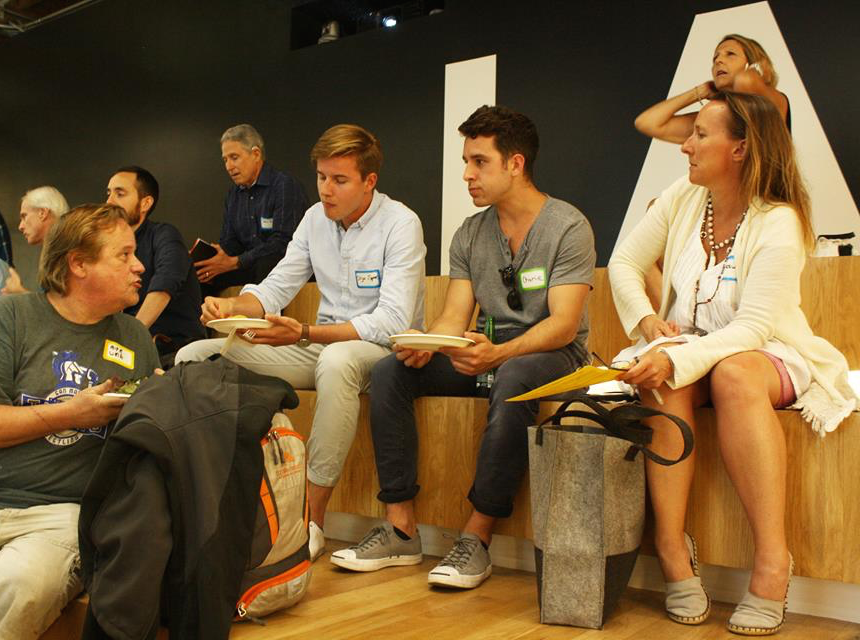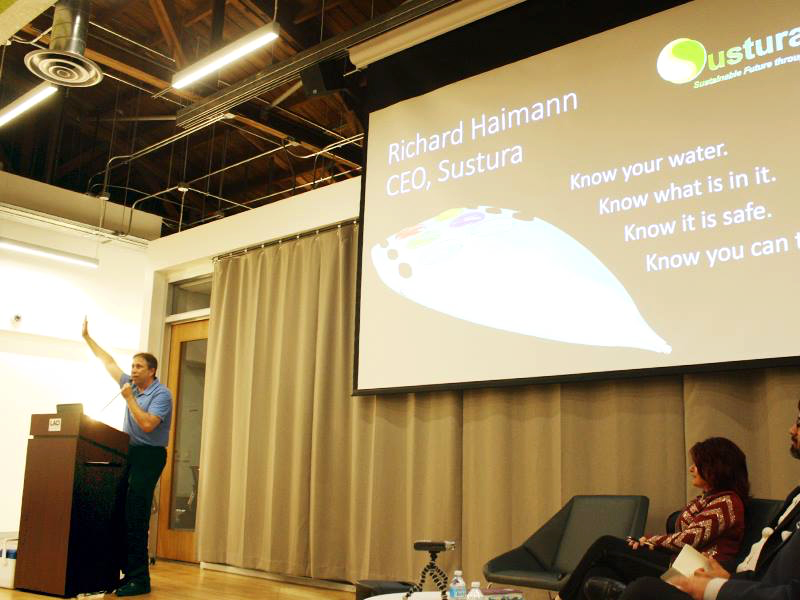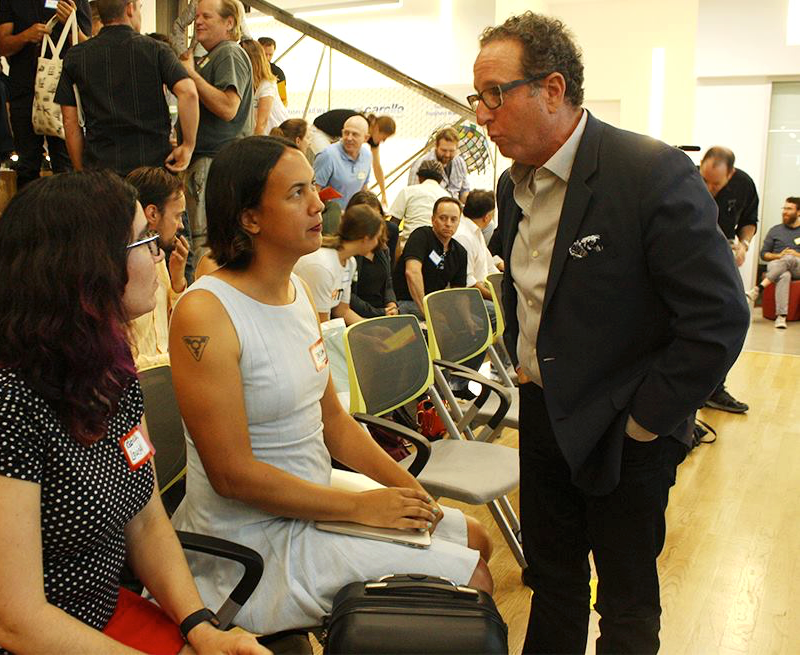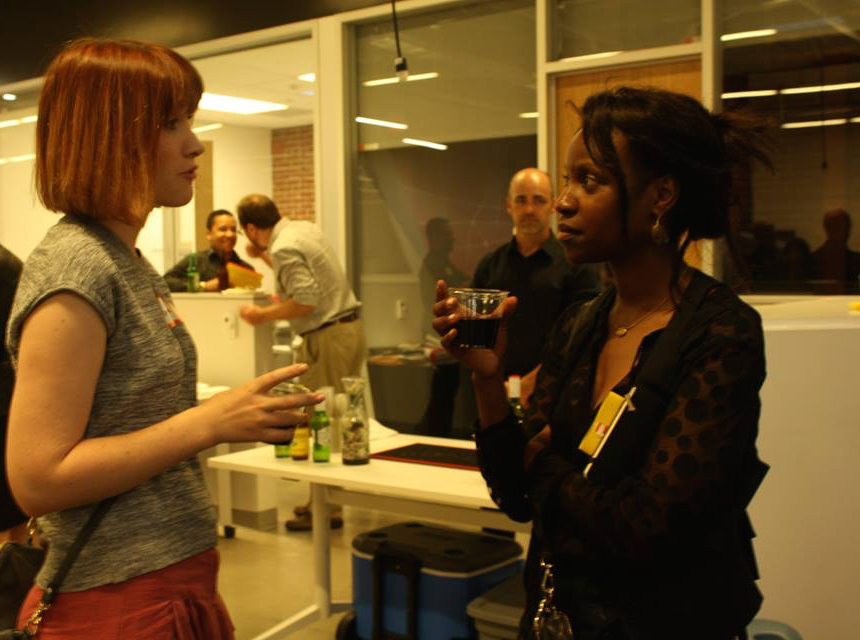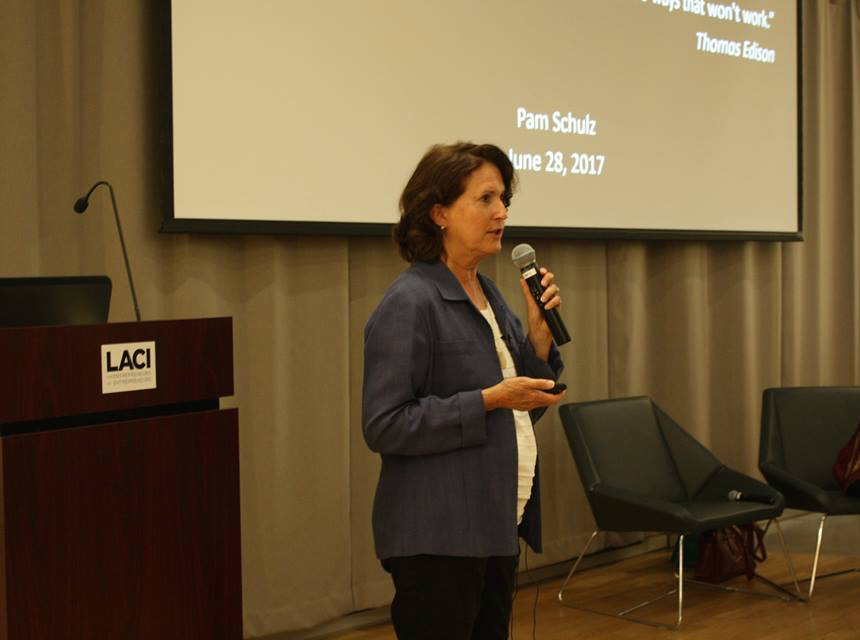For every top selling product that revolutionizes the market, there’s a Segway that, well, doesn’t.
Before you invest your time and money into your product, you need know what makes an idea viable. For June’s MAKE IT Monthly Talk, generously hosted in part by Proficia, four industry leaders helped us learn how to identify the difference between a hit and a flop, and provided insight into how to refine your product into a winner.
Our pros explained four key processes: product strategy, market intelligence, customer insight, and product design. And then they put best practices to the test, doing deep dives with two entrepreneurs to refine their produces in real time, in front of the audience.
Product Management
Pam Schulz, a former vice president of product management at Rubbermaid, emphasized three keys for product strategy success:
- Know Your Market
- Know Your Customer
- Know Your Limits
Telling about a new product she spearheaded early in her career, Schulz highlighted how important all three keys are for a product to succeed. After reading a PC Magazine article concerning the problems laptop computer users ran into while traveling, Schulz came up with the idea for a travel kit. Inside were connection cables and other gadgets to solve the 10 most common problems identified in the article. The kit was packaged for retail sale and… no one bought it.
What went wrong? Although Schulz understood the market for computer accessories, she didn’t know her customer for this particular product. The last thing a traveler wants is more stuff to carry with them which they’re not certain they’ll need. Her product was designed for the writer of the article, not for the average laptop customer.
Market Intelligence
To understand the potential market for a new product, you have to do the research. According to , an expert on market intelligence, when you consider the needs of your customer, you’ll often find issues with your product you never would have considered otherwise. For example, Sharp worked with a medical device company that designed a portable EEG (electroencephalogram) that could detect traumatic brain injury. They thought it would be perfect for use on the battlefield by the military, a new target customer beyond traditional hospitals.
The company was all set to make a huge investment in this idea – until an investor insisted on more information to validate the potential opportunity. After market research, Sharp quickly found out that the Military would have no interest in the product.
Why? On the battlefield, the electronic signals from an EEG machine can alert the enemy to its location. The medical device company had erroneously assumed the military’s needs would be the same as the hospital. It didn’t know its customer.
Customer Insight
When the CEO of Belkin called Vish Chatterji into his office, Chatterji suspected the news wouldn’t be good. He was right. Target had dropped the new iPad keyboard that Belkin was designing and decided to go with a competitor’s product instead.
Chatterji’s team was working on a new iPad keyboard, with an emphasis on product excellence as measured by end-users. They invested resources to observe and speak with keyboard users to understand their priorities. They discovered that the customer cared most about typing speed, accuracy, and tactile feedback from the keys. To design and manufacture the right product would take time and cause Belkin to miss Target’s delivery schedule.
Chatterji convinced the Belkin CEO to move forward with the longer-term development process despite Target dropping them as a supplier. When the new design finally tested positively with customers, they sent a sample to Target. Target was so enthusiastic, they immediately renegotiated a contract to carry Belkin’s product instead of the competitor. The keyboard was a bestseller and soon became a $100 million dollar division at Belkin. Chatterji succeeded because he never lost sight of the most important person with respect to the product: the customer.
Product Design
Stuart Karten’s guiding goal with product design is to create a product people will evangelize about. According to Karten, to create that product, you need to consider two experiences as coined by Proctor & Gamble:
- First Moment of Truth (FMOT): the aesthetic qualities of a product draw them in
- Second Moment of Truth (SMOT): the functionality of the product hooks them
Such products not only attract your attention, they deliver and delight beyond your expectations. They tap into your emotions. For example, the look of an iPhone attracts consumers, and then the functionality of the maps app and ease of having everything in the palm of your hand will turn them into fans.
The key is to think beyond the product and consider how purchasing, opening, and using it is a holistic experience.
Putting the Theories to the Test
After initial remarks, the panel of experts heard from two entrepreneurs who pitched them on product ideas in the prototype stage, and they went into deep dives helping them validate and refine their products.
The first entrepreneur pitched a microfluidics water safety testing device that would be provided on a subscription basis, and the second pitched a robotic suitcase. The panel pressed the entrepreneurs on who their target customer was, what they had done to learn the needs of their potential customer base, and the benefits of their products relative to that customer base. To see the talk and the videos from the deep dives, subscribe to our YouTube channel; the videos will be posted soon.
When you are thinking about investing in a new product you need to know if you have a viable product strategy. Nothing’s a sure thing, but if you know your market, know your customers, know your limits, and focus your efforts into creating a product your customers will fall in love with and recommend – then you’ve got something worthy of your time and energy.
—-
Thank you to our sponsors, Proficia, Happily, and Califia Farms.
For more events, visit the MAKE IT IN LA events page, and subscribe to our newsletter so you never miss an invitation.

